―
The worst drought in forty years
―
Have you heard of the horn of Africa?
The “Horn of Africa” refers to Eritrea, Djibouti, Ethiopia, Somalia, Kenya, and Sudan in the northeastern part of the African continent.
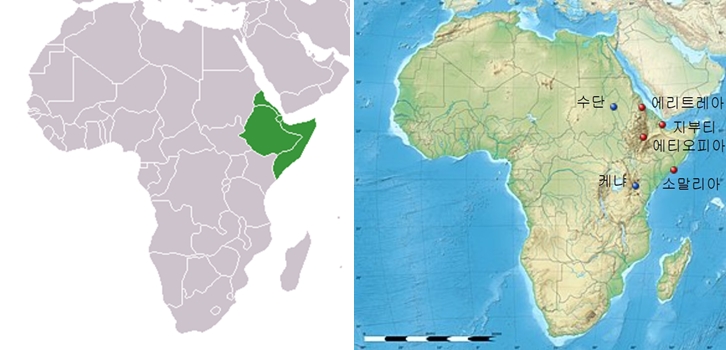
(Image source: Wikipedia)
The worst drought in 40 years has struck the Horn of Africa.
14 organizations, including the World Meteorological Organization (WMO) and the Food and Agriculture Organization of the United Nations (FAO), expressed their deep concern that this drought is an 'extreme', 'extensive' and 'continuous' multi-season drought.
(Go to World Meteorological Organization news)
―
Hunger crisis to affect twenty, million by the end of this year
―
International organizations and groups are fighting to report the serious damage and plight brought on by this worst drought.
Let's examine the situation by country.
○ Kenya has declared a national emergency due to drought. It is said that 80-90% of the freshwater volume of reservoirs has drained, exposing the dam base.
○ Ethiopia is experiencing a surge in malnutrition due to a combination of drought and civil war.
○ Somalia's drought and civil war have left more than 7 million people, nearly half of the current population, suffering from severe food shortages.
The World Food Program (WFP) says 22 million people are at risk of starvation across three countries in the region (Ethiopia, Kenya and Somalia). This is an increase of 9 million from the 13 million at the beginning of the year.
The World Food Program (WFP) has warned that as drought continues, the number of people at risk of starvation will rise rapidly.
(Go to World Food Program News)
This is not the first time drought has occurred in the Horn of Africa. Between 2010 and 2011, severe drought and famine forced more than 13 million people to urgently seek food aid.
In particular, the situation in Somalia was serious. The Somali government was unable to support the people due to the 20-year civil war, and international organizations for humanitarian aid were also blocked. There was great suffering as hundreds of thousands of families went to refugee camps in Kenya in search of food.
According to the United Nations High Commissioner for Refugees (UNHCR), a severe drought has displaced a million people from Somalia this year alone and the number of people displaced will continue to rise.
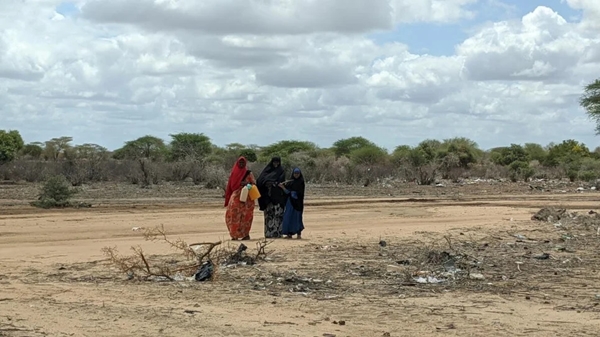
(Photo source: UNHCR)
(Go to UNHCR News)
https://www.unhcr.org/news/press/2022/8/62f4c3894/million-people-displaced-drought-somalia.html
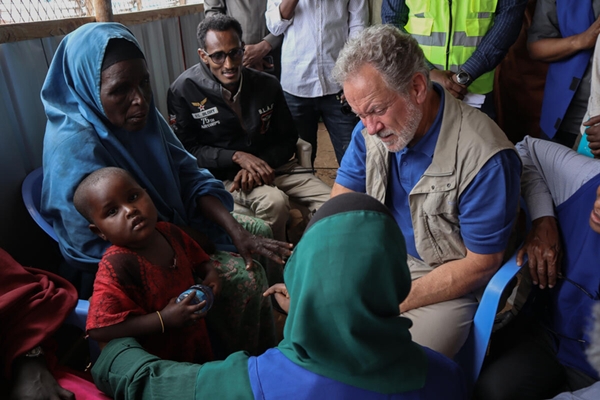
(Photo source: WFP)
Last August, World Food Program Director David Beasley visited Somalia.
“The world must act now to protect the most vulnerable communities from the threat of famine that is rampant in the Horn of Africa,” emphasized Secretary-General Beasley. “We need to ensure that we have the resources we need to stop people from falling into starvation and catastrophic levels of hunger."
WFP said it urgently needs about 561.4 billion won ($418 million) over the next six months.
Unfortunately, the suffering in the region is unlikely to stop for a while. The World Meteorological Organization (WMO) forecasts that Ethiopia, Kenya, and Somalia will experience 5 consecutive seasons without rain. The gloomy outlook is that the crisis will spread to Eritrea, most of Uganda and parts of Tanzania.
(Go to World Meteorological Organization news)
https://public.wmo.int/en/media/news/greater-horn-of-africa-faces-5th-failed-rainy-season
―
Life-threatening health crisis
―
Famine also increases the threat to life.
The World Health Organization (WHO) warned in June that health risks in East Africa are rising, while access to health care is worsening.
Dr. Ibrahima Socé Fall, WHO Deputy Director-General for Emergency Response, stated: “Stopping hunger is a clear priority,” he said, emphasizing the strengthening of health responses at the same time. With pathos he intoned, “Too many lives are lost from vaccine-preventable diseases, diarrhea and complications from malnutrition.”
(Go to World Health Organization News)
―
The drought impacts women and children more severely
―
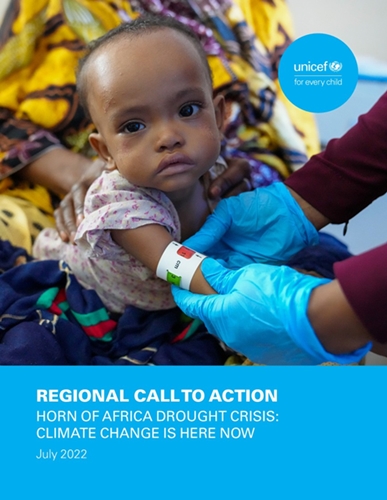
(Go to UNICEF Report)
https://www.unicef.org/esa/media/10491/file/UNICEF-Regional-CTA-HoA-Drought-July-2022(1).pdf
The impact is greater on those who are most vulnerable, namely women and children.
In July, UNICEF released a report on the damage situation in the Horn of Africa, "Climate change is happening here right now."
According to the report, two million children in Ethiopia, Kenya, Somalia and Djibouti are currently in need of treatment for severe acute malnutrition.
It said the Russian-Ukraine war is also having a serious impact on malnutrition among children in the region. The price of Ready-to-Use Therapeutic food, an essential treatment for severely malnourished children, has been adversely affected by grain supply lines and food prices in the aftermath of the war and is expected to rise by 17%.
Education is also in crisis. About 15 million children in the Horn of Africa are currently out of school, with an additional 3.3 million at risk of dropping out of school due to the drought.
In addition, threats to livelihoods caused by the drought create dangerous situations such as child sexual violence, exploitation, abuse, child labor, and early marriage of girls.
According to data released by UNICEF, there was a 37% increase in the number of severely frail children in the region in the first quarter of 2022 compared to 2021, and a 50% or more increase in early marriage and FGM in many drought-affected areas compared to 2021.
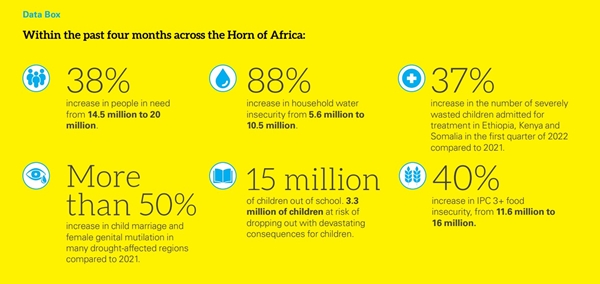
―
The cause of the drought is La Niña
―
What is the cause of the severe drought that is afflicting the Horn of Africa?
World Meteorological Organization (WMO) Director-General Petteri Taalas said in a statement: He cited "climate change" as the cause.
It is said that ‘La Niña’ that occurred between 2020 and 2022 caused a decrease in rainfall in all parts of East Africa. The 2010-2011 drought discussed above was likewise caused by La Niña.
La Niña is originally part of natural variability, but it is widely believed that humans amplify it and push it to more intense and serious extremes.
Climate change also has far-reaching impacts on food security, he said, with climate change causing a 34% decline in agricultural productivity growth since 1961 compared to any other region in Africa and will continue to negatively impact the food system by increasing water stress.
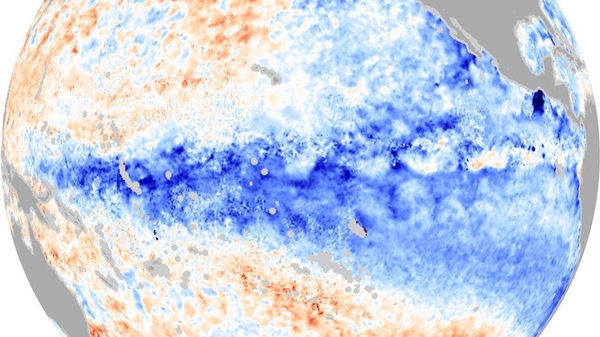
(Water temperature in the Pacific cooler due to La Niña during 2020-21. Source: NASA)
―
They are the face of the climate crisis
―
How did the Horn of Africa contribute to the climate crisis?
How do children in this region relate to the Russian-Ukrainian war
Martin Griffiths, deputy secretary-general of the United Nations Office for the Coordination of Humanitarian Affairs (OCHA), shared the situation of the people living in the Horn of Africa through his Twitter, calling for the world's attention and help.
“These people are the face of the climate crisis,” Griffiths said. “They have not caused it. We must stand in solidarity with them before it is too late.”
In order to save the lives of those who have done nothing to contribute to the climate crisis from the harsh reality of the drought, the international community will need to work together with solidarity as soon as possible.
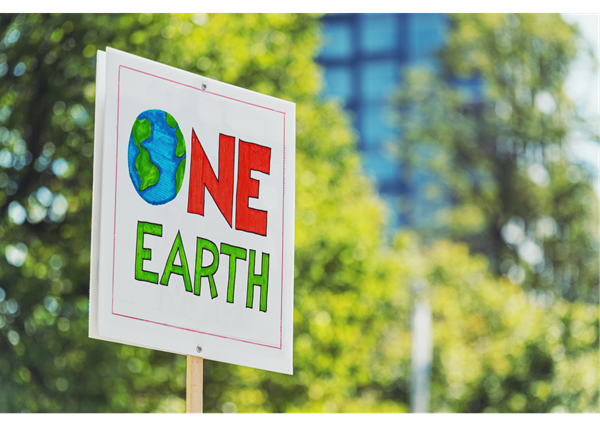
Written by Sharon Choi
Director of Planning
Sunhak Peace Prize Secretariat

